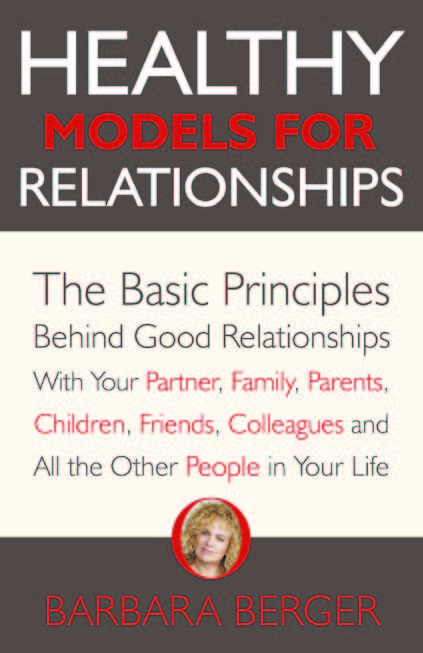Are you having difficulties disagreeing, saying no and setting boundaries? Here are a few tips as to how you can do this more easily and effectively.
Many of our problems in communicating with other people arise from the fact that we never learned how to communicate in a good way and be assertive. We don’t know how to disagree, say no, and set boundaries in a respectful yet firm way. When we learn to do this, we discover it becomes much easier to disagree with other people, say no, and take good care of ourselves. I have been working as a coach and therapist for years, helping people to learn these basic communications skills. So how does this work ?
Whenever someone confronts you with something they regard as important, I teach people what I call the “sandwich technique” to help them respond in these situations in a skillful way. In brief, we reply to the other person with sentences that are made up of two parts. In the first part of the sentence, we acknowledge that we heard the other person and in the second part of the sentence, we deliver our response. So a skillful reply goes something like:
• I can understand that you feel that way – and this is really not something for me.
• Yes, I can relate to what you’re saying – and I’m really not interested.
• Thank you for thinking of me – and no thanks.
This is a respectful, diplomatic way to deal with whatever people are saying or asking because you begin by acknowledging that you hear them (and respect them) and that you understand what they’re saying (and even appreciate their concern). And then once you let the person know that you hear and respect them, you come with your response that is your no or your disagreement or you setting a boundary or limits.
Here is an example:
Party Host: “Barbara, we’re really counting on your coming to our little get-together on Friday. It will be good for you to get out and meet some new people.”
My response: “Thank you so much for thinking of me and I can’t make it that evening.”
Party Host: “But Barbara, we’re counting on your coming.”
My response: “I really appreciate you’re thinking of me and I can’t come that evening.”
If the person keeps on, you just keep repeating what you said. Sooner or later the other person will give up.
Here’s another example:
Friend/Mother: “Barbara, I think you should take that job, it would be good for you.”
My response: “Yes I can relate to what you’re saying and it’s simply not for me.”
Friend/Mother: “But Barbara, can’t you see what a great job opportunity this would be for you. You could learn so much.”
My response: “Yes thank you for thinking of me and it’s simply not for me.”
When you take care of yourself assertively in this way, it’s good to remember the other person probably won’t agree with you and doesn’t have to. Being assertive doesn’t have anything to do with winning arguments or being right. Being assertive is about expressing your point of view and taking care of yourself. It’s not about winning and losing.
So be willing to hear and acknowledge the other person’s point of view (“you could be right”) and then clearly state your own position (“and it’s not for me”). And if the other person repeats him or herself again, you can just repeat your own position or point of view again, kindly but firmly. You don’t have to come up with new explanations or arguments, just repeat what you said before. “Thank you so much for thinking of me, I really appreciate it, and I can’t come Friday evening.” Just stay in your own business and repeat your own position. Remember – you are responsible for your feelings and opinions about the matter. The other person is responsible for his or her feelings and opinions about the matter. Each person has a right to his/her feelings and opinions. You don’t have to justify, offer explanations or find excuses for your choices, opinions, beliefs or behavior. (You might want to explain but the important point to remember is that you don’t have to. You have the right to be you!)
It’s also important to understand that learning to say no, set limits and be assertive like this takes practice. It’s not something one learns in a day or two, it really does take practice. In the beginning, it can often help to write things down so you can remind yourself of what you want to say when you know you’re going to be talking to someone you have difficulty saying no to.
And for beginners, when someone catches you off guard with a request and you’re not sure how to respond – another good technique is to ask for time. Tell the other person that you have to check your calendar and that you will get back to them tomorrow. This will give you time to plan how to deal with the situation assertively when you call back and respond.
 American-born Barbara Berger is the best-selling author of The Road to Power – Fast Food for the Soul, Are You Happy Now? 10 Ways to Live a Happy Life, The Awakening Human Being – A Guide to the Power of Mind, and Find and Follow Your Inner Compass. Barbara’s latest book is Healthy Models for Relationships – the Basic Principles Behind Good Relationships With Your Partner, Family, Parents, Children, Friends, Colleagues and All the Other People in Your Life. Coming soon: Barbara’s autobiography entitled My Road to Power – Sex, Trauma & Higher Consciousness. Barbara works as coach and therapist, helping people around the globe come into alignment with their own true power. See her Website: beamteam.com.
American-born Barbara Berger is the best-selling author of The Road to Power – Fast Food for the Soul, Are You Happy Now? 10 Ways to Live a Happy Life, The Awakening Human Being – A Guide to the Power of Mind, and Find and Follow Your Inner Compass. Barbara’s latest book is Healthy Models for Relationships – the Basic Principles Behind Good Relationships With Your Partner, Family, Parents, Children, Friends, Colleagues and All the Other People in Your Life. Coming soon: Barbara’s autobiography entitled My Road to Power – Sex, Trauma & Higher Consciousness. Barbara works as coach and therapist, helping people around the globe come into alignment with their own true power. See her Website: beamteam.com.

















